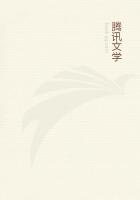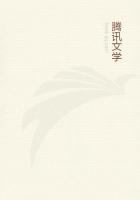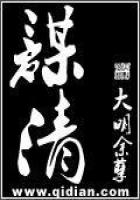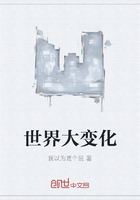3. The orginal development of temporal ideas belongs to touch. Tactual sensations, accordingly, furnish the general substratum for the rise of both the spacial and temporal [p. 145] arrangements of ideational elements (p. 104, 3). The spacial functions of touch, however, come from the outer tactual sensations, while the inner sensations which accompany movements are the primary contents of the earliest temporal ideas.
The mechanical properties of the limbs are important physiological bases for the rise of these ideas.
The arms and legs can be moved in the shoulder-joints and hip-joints by their muscles, and are at the same time subject to the action of gravitation drawing them downward. As a result there are two kinds of movements possible for them. First, we have those which are continually regulated by voluntary activity of the muscles and may, therefore, be indefinitely varied and accommodated at every moment to the existing needs -- we will call these the arhythmical movements. Secondly, we have those in which the voluntary energy of the muscles is operative only so far as it is required to set the limbs oscillating in their joints and to maintain this movement -- rhythmical movements. We may neglect for our present consideration the arhythmical movements exhibited in the various uses of the limbs. Their temporal attributes are in all probability derived from the rhythmical movements, and only a very indefinite comparison of the duration of irregular movements is possible.
4. With rhythmical movements the case is different. Their significance for the psychological development of time-ideas is due to the same principle which gives them their importance as physiological organs, namely, the principle of the isochronism of oscillations of like amplitude. In walking, the regular oscillations of our legs in the hip-joints not only make the muscular energy expended less, but reduce to a minimum the continual voluntary control of the movements.
Furthermore, in natural walking the arms are supplementary aids. [p. 146]
Their oscillation is not interrupted at every step like that of the legs by the placing of the foot on the ground, so that they furnish because of their continuity a means for the more uniform regulation of their movements.
Every suite period of oscillation in such a movement is made up of a continuous succession of sensations that are repeated in the following period in exactly the same order. The two limits of the period are marked by a complex of outer tactual sensations: the beginning by the impression accompanying the removal of the foot from the ground, the end by that accompanying its return to the ground. Between these there is a continuous series of weak inner tactual sensations from the joints and muscles. The beginning and end of this series of inner sensations coincide with the outer sensations and are more intense than those between them. They arise from the impulse of movement coming to the muscles and joints and from the sudden inhibition of the same, and serve also to mark off the periods.
Connected with this regular succession of sensations is a regular and exactly parallel series of feelings. If we consider a single period in a series of rhythmical movements, there is always at its beginning and end a feeling of fulfilled expectation.
Between the two limits of the period, beginning with the first movement, is a gradually growing, feeling of strained expectation, which suddenly sinks at the last moment from its maximum to zero, to make place for the rapidly rising and sinking feeling of fulfillment. From this point on the same series is again repeated. Thus, the whole process of a rhythmical of a touch-environment consists, on its affective side, of two qualitatively antagonistic feelings. In their general character these feelings belong to the direction of straining. and relaxing feelings (p. 83). One is a momentary feeling, that is, one that rises very rapidly to its maximum and then [p. 147] sinks with equal rapidity; the other is a feeling of long duration which gradually reaches a maximum and then suddenly disappears.
As a result, the most intense affective processes are crowded together at the extremities of the periods, and are made all the more intense through the contrast between the feeling of satisfaction and the preceding feeling of expectation. Just in the same way that this sharply marked limit between the single periods has its sensational substratum in the strong outer and inner tactual impressions that arise at this instant, as above mentioned, so we have a complete correspondence between the gradual rise of the feeling of expectation and the continuous series of weaker inner tactual sensations accompanying the oscillatory movements of the limbs.
5. The ******st temporal ideas of touch are made up of the rhythmically arranged sensations that follow one another with perfect uniformity in the manner described, when like oscillatory movements are repeatedly carried out. But even in ordinary walking a slight tendency toward a somewhat greater complication arises; the beginning of the first of two successive periods is emphasized, both in the sensation and in the accompanying feeling, more than the beginning of the second.
In this case the rhythm of movement begins to be metrical. In fact, such a regular succession of accented and unaccented ideas corresponds to the ******st measure, 2/8 time. It arises easily in ordinary walking because of the physiological superiority of the right side, and appears very regularly when several persons are walking together in marching .
In the latter case even more than two periods may be united into one rhythmical unit. The same is true of the complicated rhythmical movements of the dance.
But in such composite tactual rhythms the auditory temporal ideas have a decided influence. [p. 148] B. TEMPORAL AUDITORY IDEAS.














